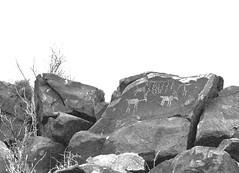Shamanism Healing And The Other Healing Cultures
Many of the ancient cultures of the world adhered to one or the other form of Shamanism. This is a tribal healing tradition where a Shaman is said to transcend the boundaries of the conscious world and travel to a world unbeknown to the ordinary man. Here, the Shaman converses with spirits and come back with secrets that allows him to heal others, foretell the future, control the weather and even ward off attacks.
The word ‘Saman’ is defined as a technique of ecstasy. A Shaman is a practitioner who is able to enter an altered state of consciousness where he can communicate with the supernatural. He acts as an intermediary between the world of man and the world of Gods and often has the power to descend to the realm of the dead. He leaves his body when he is in trance. This trance is induced by chanting, beating of the drum or passionate dancing. In the more unsophisticated cultures, Shamans even used to take to fasting, ingesting psychotropic drugs or even undergo torture to achieve the trance.
As seen from the practices, Shamanism is based on the principle that the world is divided into 2 distinct parts – that visible to the ordinary man, and that visible only to the man with powers. In the second part, there is a miraculous world populated by the spirits who influence the world of the living and who are always willing to help. The Shaman acts as a link between the two worlds and works for the benefit of his society. Shamans are therefore experts employed by animistic societies.
Healing is the most important function of the Shaman followed by prophecy. Shamanism, in the larger sense of the word, is thus perhaps the oldest form of healing. It is a form of religious medicine that originated more
Pages: 1 2
